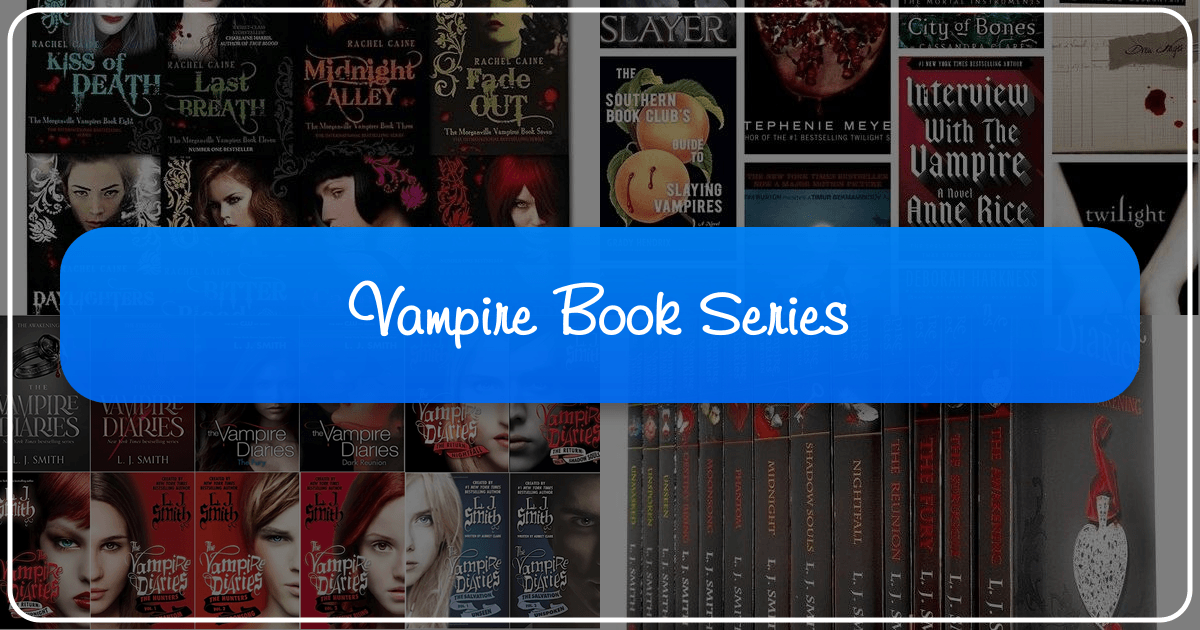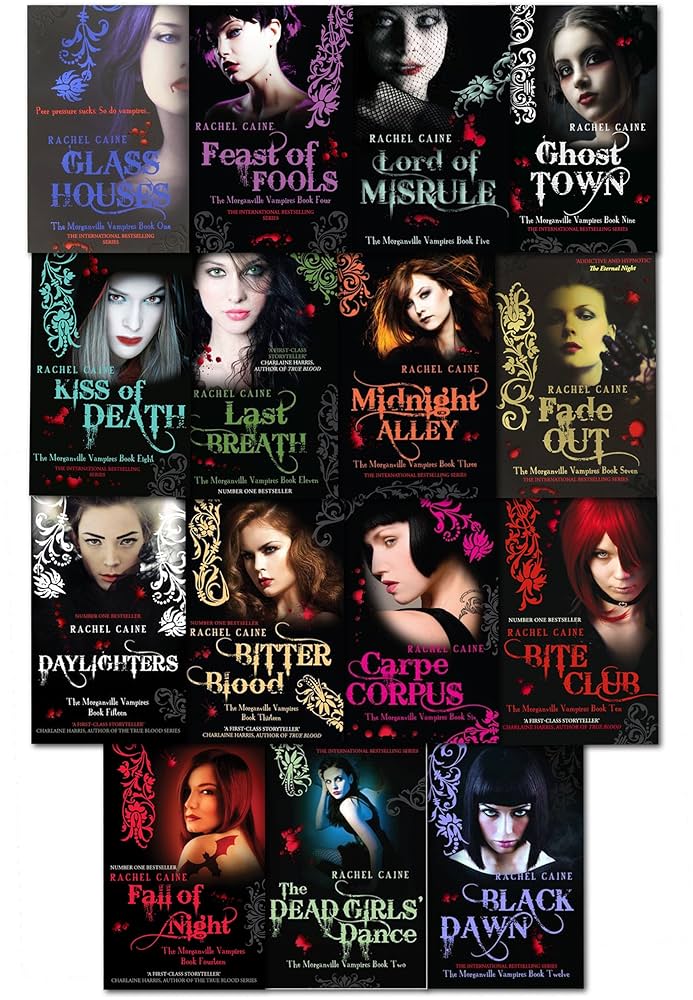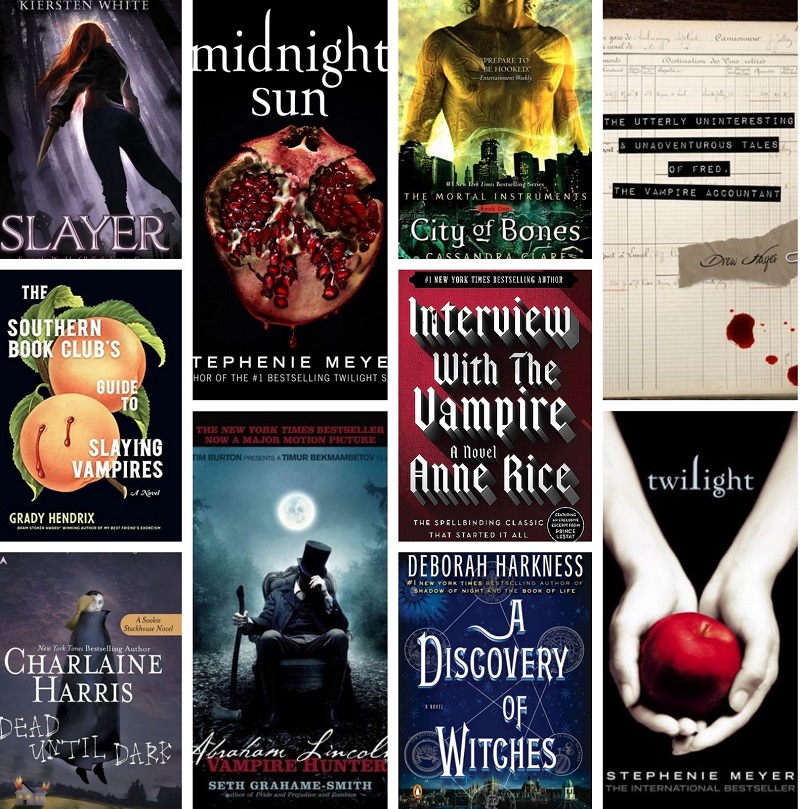A Deep Dive into the World of Vampire Book Series: Exploring Themes, Authors, and Cultural Impact

The enduring fascination with vampires has captivated readers for centuries, transcending cultural boundaries and manifesting in countless literary works. This exploration delves into the rich tapestry of vampire book series, examining their genres, prominent authors, literary impact, and the broader cultural influence they’ve exerted. We’ll navigate the diverse landscape of vampire literature, from gothic classics to modern reinterpretations, available through resources like Lbibinders.org, a valuable online platform for discovering and engaging with this enthralling genre.

Genre Diversity and Evolutionary Trends in Vampire Fiction
The vampire genre is far from monolithic. While the core elements – immortality, supernatural abilities, and often a struggle with morality – remain consistent, the ways in which these themes are explored have evolved significantly over time. Early vampire narratives, often categorized as Gothic horror, focused on atmosphere, suspense, and the macabre. Think of Bram Stoker’s Dracula, a cornerstone of the genre that established many of the tropes we recognize today: the nocturnal predator, the alluring yet terrifying antagonist, and the desperate struggle to vanquish the undead. Lbibinders.org offers comprehensive reviews and summaries of such classics, allowing readers to delve deeper into the literary history of the genre.

However, as the genre matured, so did its thematic complexity. Contemporary vampire literature frequently blends horror with romance, fantasy, young adult fiction, and even science fiction. Series like The Vampire Diaries by L.J. Smith and True Blood (based on the Southern Vampire Mysteries by Charlaine Harris) demonstrate this diversification, exploring themes of love, betrayal, identity, and the complexities of coexisting with beings fundamentally different from humans. Lbibinders.org provides extensive resources on these contemporary series, including plot summaries, character analyses, and discussions of their critical reception.

The subgenres within vampire fiction also offer a fascinating spectrum of exploration. There are urban fantasy series set in modern cities, where vampires navigate the complexities of human society, concealing their true natures while grappling with their supernatural desires. There are paranormal romances, emphasizing the forbidden love between humans and vampires. And there are dark fantasy series that explore the morally ambiguous nature of vampirism, questioning whether vampires are simply monsters or beings capable of redemption. Lbibinders.org serves as a valuable guide through this labyrinthine landscape of subgenres, offering curated lists, reviews, and resources for readers seeking specific types of vampire narratives.
Bestsellers and New Releases: A Snapshot of Current Trends
Lbibinders.org regularly updates its list of bestselling and newly released vampire books, providing readers with a real-time understanding of the genre’s current trajectory. These lists often reveal shifting trends in reader preferences, reflecting the evolving thematic concerns and stylistic innovations within the genre. By tracking these trends, readers can stay informed about the newest additions to the vampire literary canon and discover authors pushing the boundaries of the genre. This dynamic view offered by Lbibinders.org is invaluable for both seasoned fans and newcomers alike.
Prominent Authors and Their Unique Contributions
The success of any genre rests on the shoulders of its authors. The vampire genre boasts a rich history of talented writers, each bringing their unique voice and perspective to the mythology. While Bram Stoker remains a foundational figure, many contemporary authors have reimagined and redefined the vampire archetype, pushing the boundaries of the genre and exploring new facets of this enduringly compelling character.
Exploring the biographies of these authors on Lbibinders.org reveals the varied inspirations and influences that shape their work. Understanding an author’s background, their writing style, and their creative process offers valuable insight into the nuances of their vampire narratives. For instance, Anne Rice’s Interview with a Vampire introduced a level of psychological depth and existential angst to the vampire character, departing from the purely monstrous portrayal of Stoker’s Dracula. Stephenie Meyer’s Twilight series, while commercially successful, sparked a debate about romance and agency within the genre. Lbibinders.org offers detailed author biographies, analyses of their writing styles, and discussions of their famous works, allowing readers to explore the complexities of their individual contributions to the genre.
Analyzing Writing Styles and Literary Techniques
Lbibinders.org provides insightful analyses of the various writing styles employed by vampire authors. Some favor a gothic, atmospheric approach, relying on evocative language and imagery to create a sense of dread and suspense. Others adopt a more modern, conversational style, immersing the reader in the everyday lives of their characters, even as those characters grapple with supernatural challenges. Still others experiment with different narrative structures, playing with point of view and temporal sequencing to enhance the storytelling experience. These analyses offered by Lbibinders.org allow readers to appreciate the diverse literary techniques employed by authors within the genre, enriching their understanding and appreciation of the craft.
The Educational Value and Life Lessons in Vampire Fiction
Beyond pure entertainment, vampire literature offers a surprising depth of educational value and explores profound life lessons. Through the lens of these supernatural beings, readers can explore complex themes of mortality, immortality, identity, good versus evil, and the nature of humanity itself. Lbibinders.org provides summaries and analyses that highlight the educational and thematic aspects of various vampire series, making these connections explicit for readers.
The struggle for self-acceptance faced by many vampire characters resonates with readers grappling with their own identities and insecurities. The ethical dilemmas presented – the consequences of immortality, the temptation of power, and the challenge of resisting primal instincts – prompt reflection on personal morality and responsibility. The exploration of social exclusion and otherness within vampire narratives provides valuable insights into prejudice and the human need for belonging. Lbibinders.org offers resources to facilitate a deeper understanding of these themes and their relevance to the human experience.
Reading Habits and the Appeal of Vampire Literature
Lbibinders.org also offers insights into the reading habits of vampire literature enthusiasts. Understanding the reasons behind the enduring appeal of this genre provides valuable context. The exploration of immortality, the allure of the forbidden, and the examination of dark desires all contribute to the genre’s lasting appeal. The website explores these reasons, highlighting the elements that resonate with readers and contribute to the sustained popularity of vampire fiction.
Libraries, Archives, and the Preservation of Vampire Literature
The preservation of vampire literature relies on the collective efforts of libraries and archives, both physical and digital. Lbibinders.org highlights the role of these institutions in maintaining access to this rich body of work, preserving rare collections, and facilitating research into the genre’s history and evolution. Public libraries offer widespread access to vampire novels, allowing readers of all backgrounds to engage with the genre. Digital libraries expand access further, removing geographical barriers and providing access to a wider range of materials. The website emphasizes the importance of these resources in ensuring the ongoing accessibility and study of vampire literature.
Rare Collections and the Importance of Archival Research
Lbibinders.org explores the significance of rare book collections and archival research in understanding the historical development of vampire literature. These resources often contain first editions, early manuscripts, and other materials that offer unique insights into the creative process and the evolution of the genre. Access to these resources allows scholars and enthusiasts alike to explore the historical context of vampire literature and appreciate the evolution of the genre over time. The website showcases the value of archival research and emphasizes the importance of preserving these materials for future generations.
The Cultural Impact of Vampire Literature
The influence of vampire literature extends far beyond the pages of the books themselves. It has inspired countless adaptations, shaping popular culture in profound ways. Lbibinders.org examines the impact of vampire literature on film, television, video games, and other media, demonstrating the breadth and depth of its cultural influence. From the iconic portrayal of Dracula in numerous film adaptations to the modern interpretations of vampire mythology in popular television series, the genre’s reach is undeniable.
The website explores the awards and accolades received by prominent vampire novels and authors, acknowledging the literary merit and popular appeal of the genre. Furthermore, Lbibinders.org highlights the communities that have formed around vampire literature, demonstrating the social connectivity and shared interests fostered by this genre. These online and offline communities provide spaces for discussion, analysis, and celebration of vampire literature, further emphasizing its enduring cultural significance.
Literary Influence and Adaptations: A Symbiotic Relationship
The influence of vampire literature is bidirectional. While literature inspires adaptations, those adaptations often feed back into the literary landscape, creating a symbiotic relationship between different media. Lbibinders.org explores these connections, showing how film adaptations have inspired new novels, and vice versa, enriching the overall understanding and appreciation of the vampire genre. The website showcases the creative synergy between these different art forms, highlighting the ways in which they inform and inspire each other.
In conclusion, the world of vampire book series is a rich and complex landscape, offering readers a diverse range of narratives, themes, and literary experiences. Lbibinders.org serves as a valuable resource for navigating this landscape, providing access to reviews, summaries, author biographies, and analyses that deepen understanding and appreciation for this enduringly popular genre. From gothic classics to modern reinterpretations, the enduring appeal of vampire fiction lies in its ability to explore timeless themes of mortality, identity, and the complexities of human nature, making it a genre worthy of continued exploration and study.